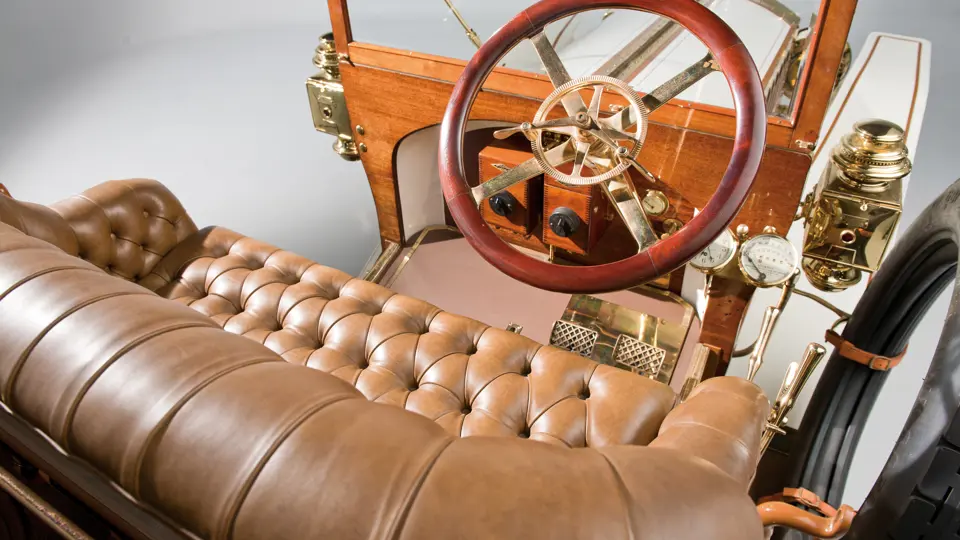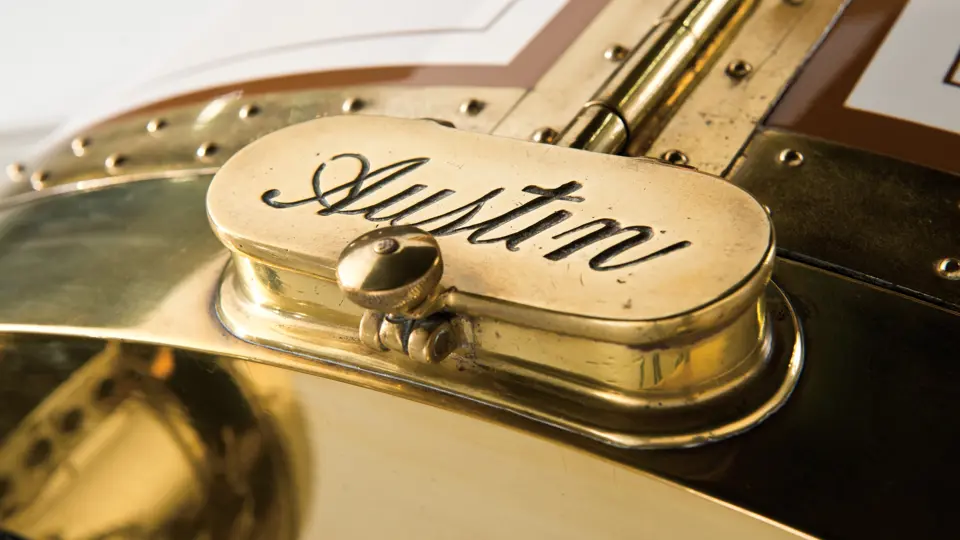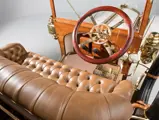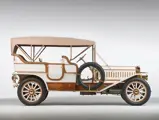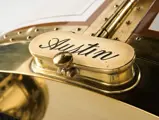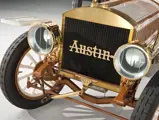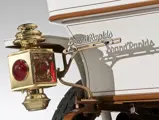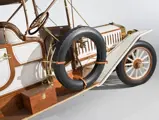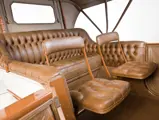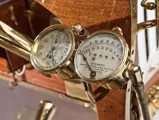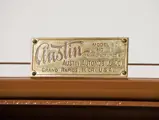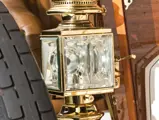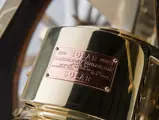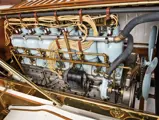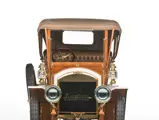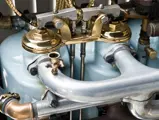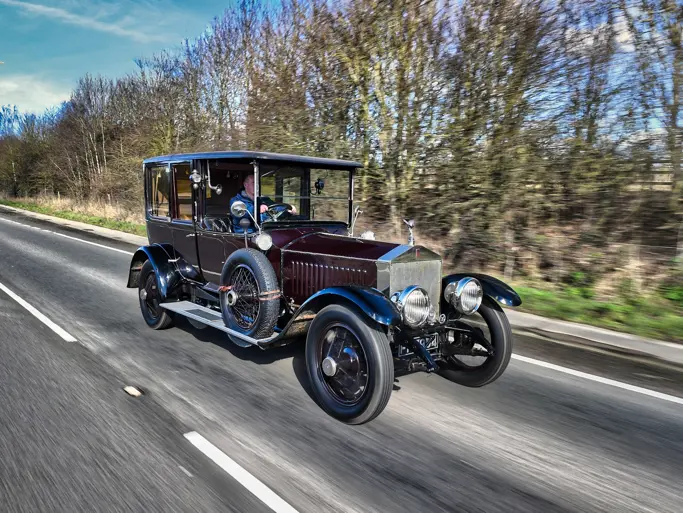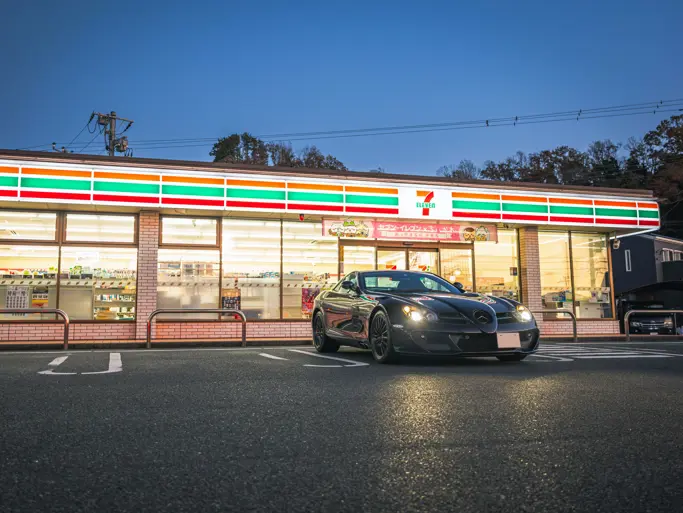90 bhp, 784 cu. in. F-head inline six-cylinder engine, four-speed transmission, rear-wheel drive, and rear-wheel mechanical drum brakes. Wheelbase: 141 in.
There is no replacement for displacement. Muscle car owners may have said it in the 1960s, but it was true 60 years earlier, when roads were growing ever better, cars grew ever larger and ever faster. With engine technology limited by the times, the power demanded by aristocratic automobilists was achieved through increasing engine size, until the finest luxury cars often boasted powerplants in excess of 600 cubic inches, churning chain or shaft drives that spun wide wooden wheels through the dirt roads leading to and from their owner’s country spreads.
The automobilist seeking such a car in 1909 would certainly have considered the Austin Model 60, the flagship of the Austin Automobile Company, of Grand Rapids, Michigan, the “manufacturers of strictly high grade pleasure cars.” What had begun in 1903 as a vanity project to keep lumberman James Austin’s gearhead son Walter busy, eventually became the builders of over-engineered cars that were as grand as they were expensive. By the time of its folding in 1920, a victim of the post-World War I recession, Austin had pioneered such innovations as two-speed rear axles and V-12 power.
The Model 60 was the ultimate Austin. Its massive 141-inch wheelbase chassis supported an F-head inline six of immense proportions, displacing nearly 800 cubic inches and churning out 90 throbbing horsepower at a time when other fine American cars such as Packard and Peerless produced only half that. This engine was equipped with fully pressurized lubrication, and the engine turned smoothly on seven massive bearings.
In its day, the Model 60’s exclusivity was ensured by price. Today, it is ensured by solitude: the car offered here is the only Model 60 Austin in existence today. It is a showstopper, which is appropriate, as this car sat on the floor of the 1909 Chicago Auto Show.
Among those who saw the car at the show was Charles Herbst, a gentleman of means from Lima, Ohio, a prosperous manufacturing town in Allen County, near the Lincoln Highway. The gentleman had traveled to Chicago to collect his new car and had paid Walter Austin $5,000 (the catalogue price) for the Model 60. The new Austin was driven out of Chicago and onward to its new home in Lima, where its owner and his family maintained it in excellent, fully operational condition for the next 38 years.
When the family parted with the car in 1946, the buyer was Barney Pollard. An enthusiast of Brass Era cars needs no introduction to Pollard, the Detroit trucking baron who was among the United States’ earliest true car collectors. Pollard hungered for big, old cars at a time when they were considered outdated scrapyard fodder, and his passionate collecting saved literally hundreds of today’s finest brass beauties from extinction.
While many of his cars were quite literally stacked in warehouses, where they remained for decades, Pollard maintained the Austin very much as he bought it, as an excellent, complete, original car that was in fine running condition. He took advantage of its speed and power, and he exercised it on the 1947 and 1953 Glidden Tours. Later, after industrialist Frederick Crawford opened his automotive museum in Cleveland, Ohio, the Austin became an exhibit, on loan from Pollard, and it was enjoyed there by the public for 30 years.
The Pollard family finally elected to part with their beloved Austin in 1983. After many negotiations, it was turned over to its present owner, only its third caretaker since new, who retrieved the Austin from the Crawford Auto-Aviation Museum and has cared for and treasured it ever since.
While the owner elected to restore the car about a decade ago, it is important to note that prior to the restoration, it had never really been apart, and unlike many other brass cars that have been extensively rebuilt from remnants dragged out of muddy junkyards, this one has always been cared for in over a century of ownership. It retains not only its original engine, frame, and body, but essentially every original part, large and small, with which it was delivered in 1909. That includes all of the original wood (with the exception of the dashboard), the original wheels, and even the original pistons. Body and interior work was done by Amish craftsmen to their legendary standards.
The Austin is today exactly the same car it was in 1909, just taken apart, brought back to “new,” and put back together again. The owner has even kept up the tradition of keeping the car running and driving in excellent order, just as Mr. Herbst and Barney Pollard did.
The sole surviving Model 60 has continued to be the most prominent example of the Austin marque, appearing in George Ferris’s definitive history, “Austin: ‘The Highway King,’” published in the March–April 1978 issue of Antique Automobile, as well as in a cover feature of the January–March 1984 issue of The Bulb Horn, a magazine in which it had earlier appeared, in October 1947, showing it being “manually reversed” during the Glidden Tour. Importantly, all of these features were published prior to the restoration, and the photos and text within prove that this car has always remained complete and intact.
However, copies of these magazines are only the tip of the iceberg in the documentation that accompanies this car, including a veritable Austin archive of detailed photographs taken before, during, and after restoration, as well as truly incredible old sales paperwork and a title dating to Pollard’s purchase from Herbst, a priceless photo of this very car at the 1909 Chicago show, and, best of all, the original brochure for the model, with Mr. Herbst’s name and address handwritten on the cover. In all likelihood, it is the copy he held in his hands as Walter Austin sold him a car in 1909.
The 1909 Austin Model 60 Touring is one of the finest surviving American automobiles of the Brass Era. It carries with it not only the documents and stories of an automotive life well lived, but also the spirit of the three men who loved and preserved it. Staring into those wide brass headlights, one can almost capture the last of a reflection of a crowded hall in Chicago in 1909, and among the bustle, a certain well-dressed gentleman from Lima, Ohio, paused, with “automobiling” on his mind.





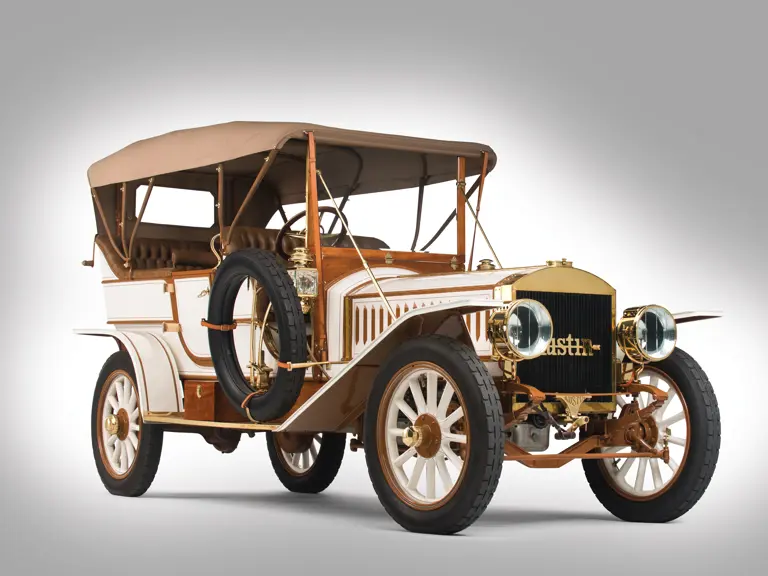

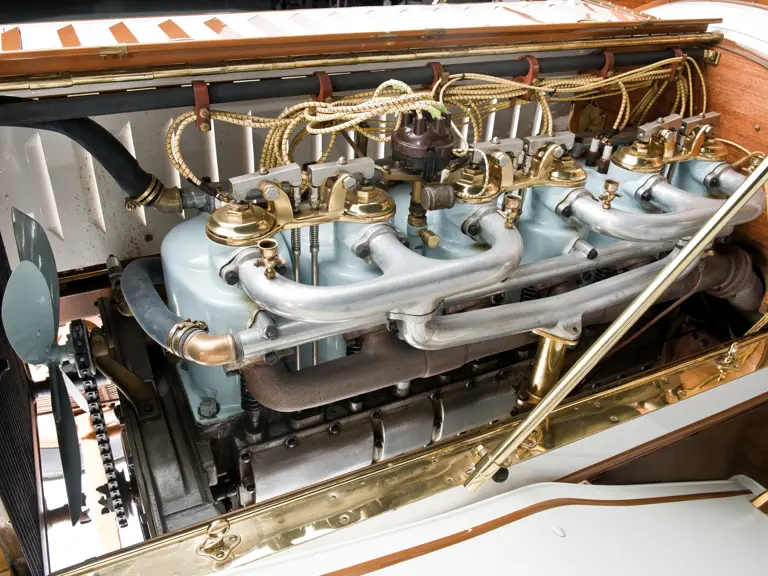
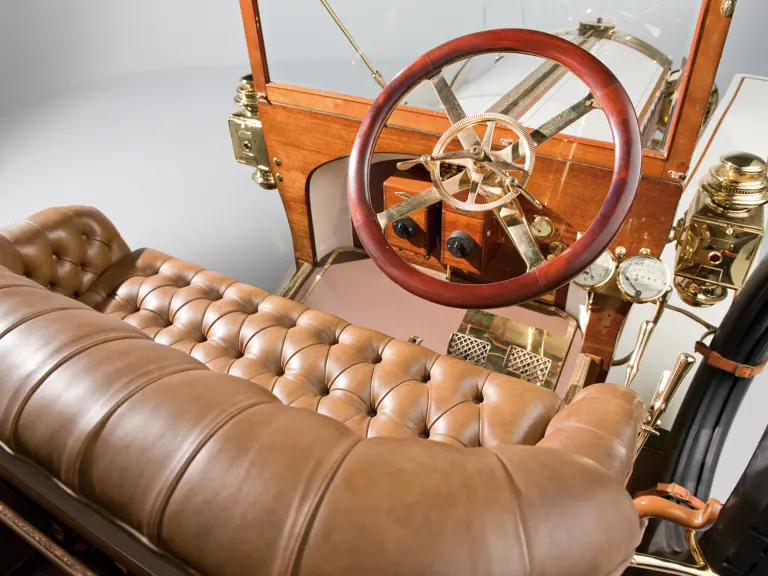
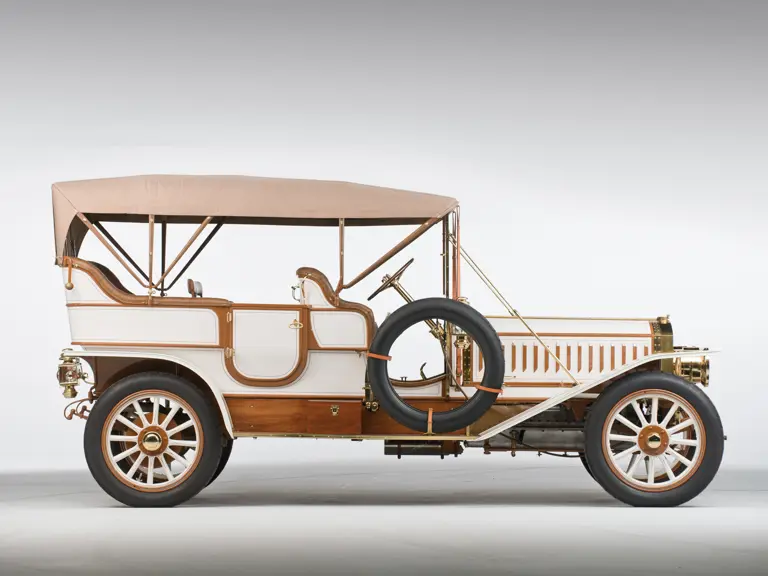

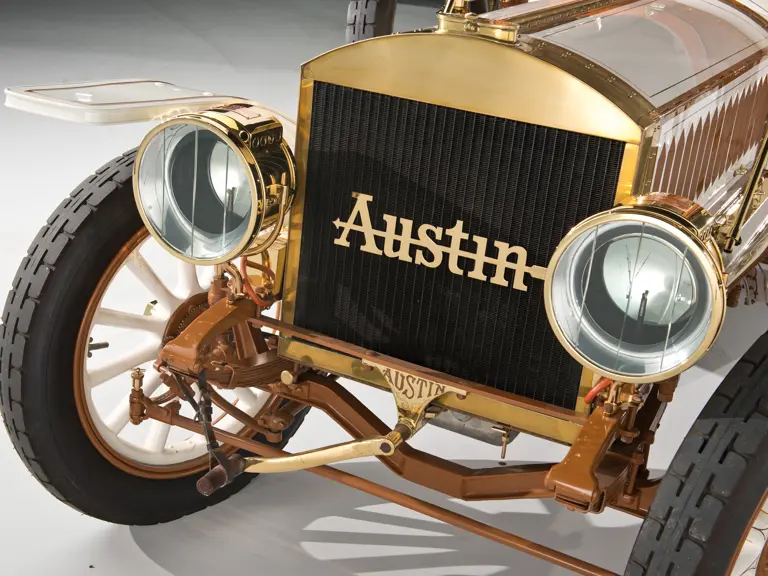
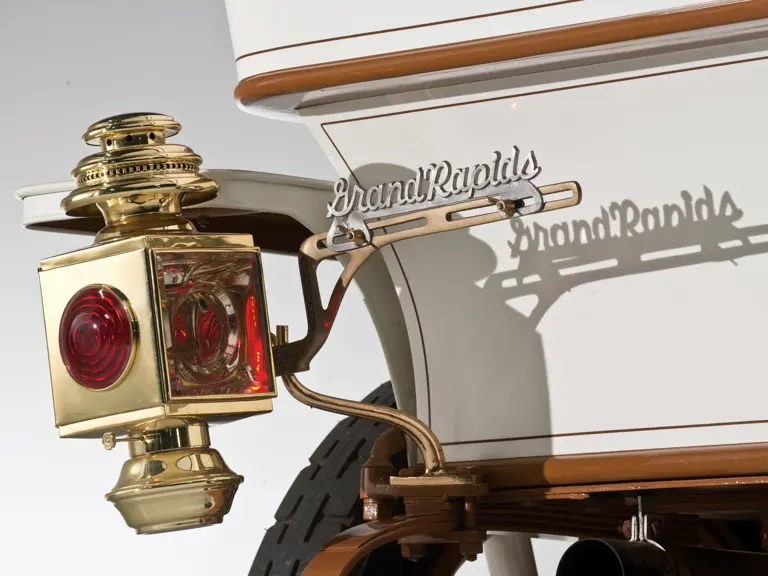
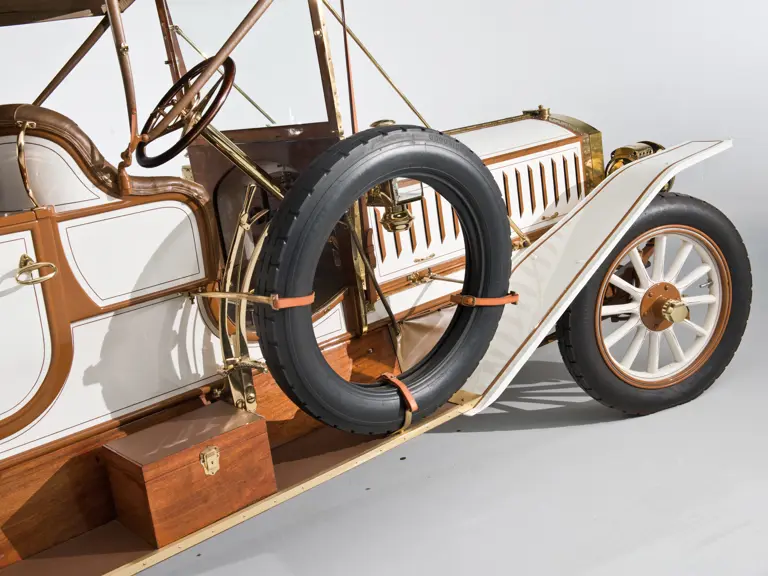
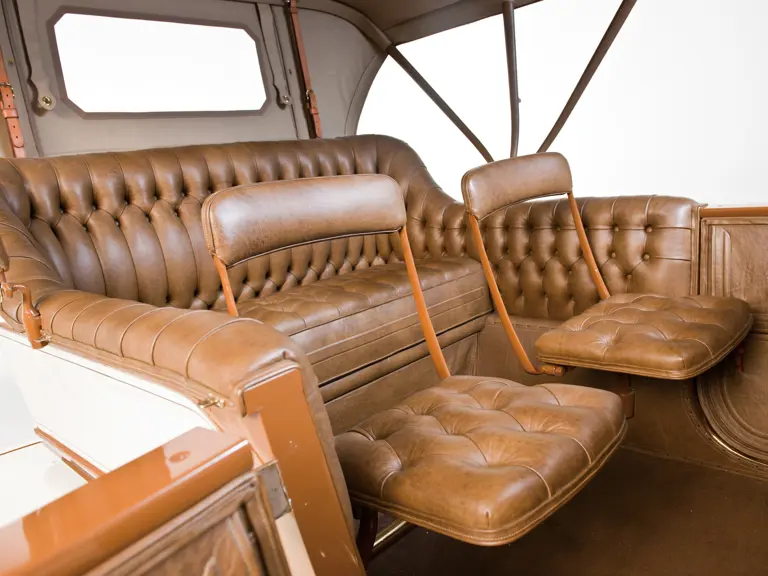
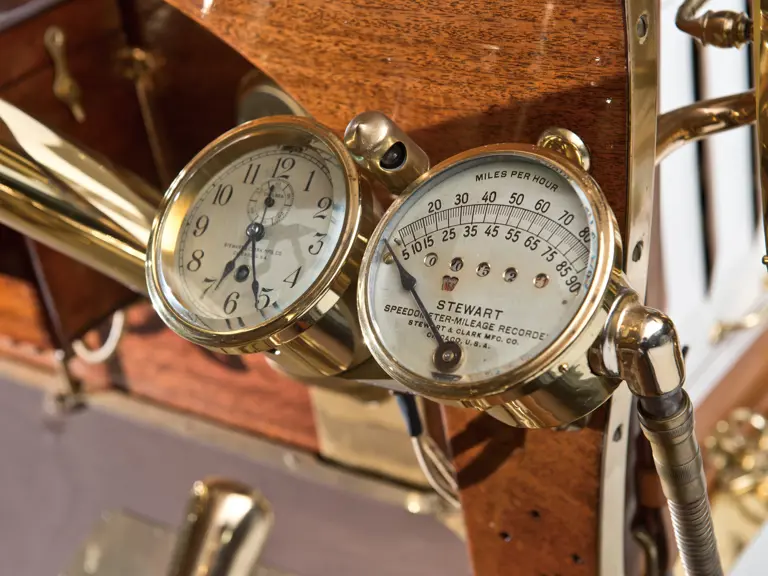
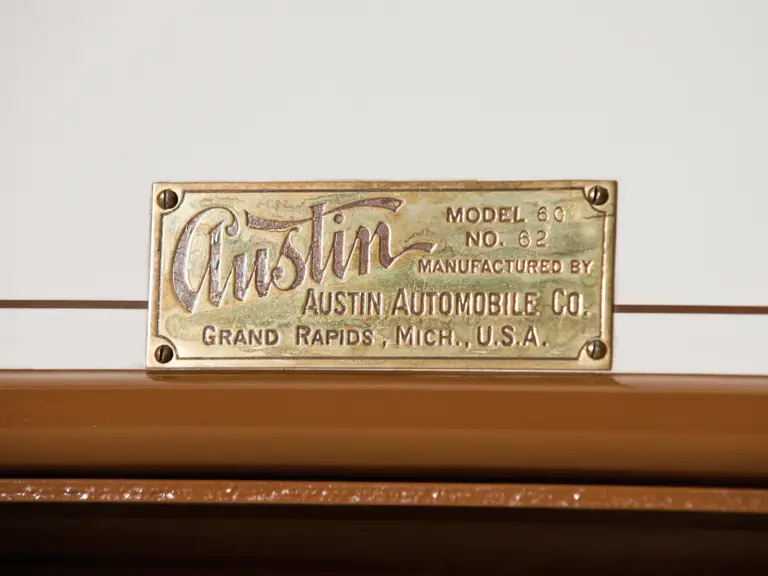
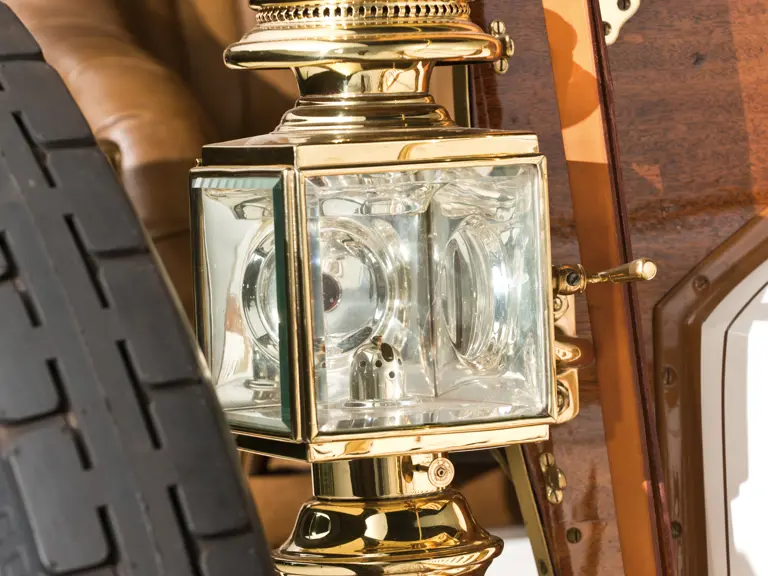

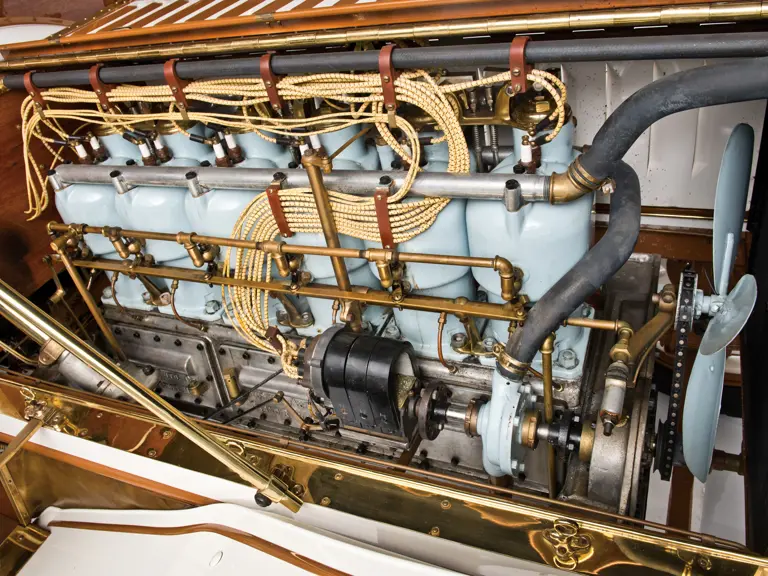


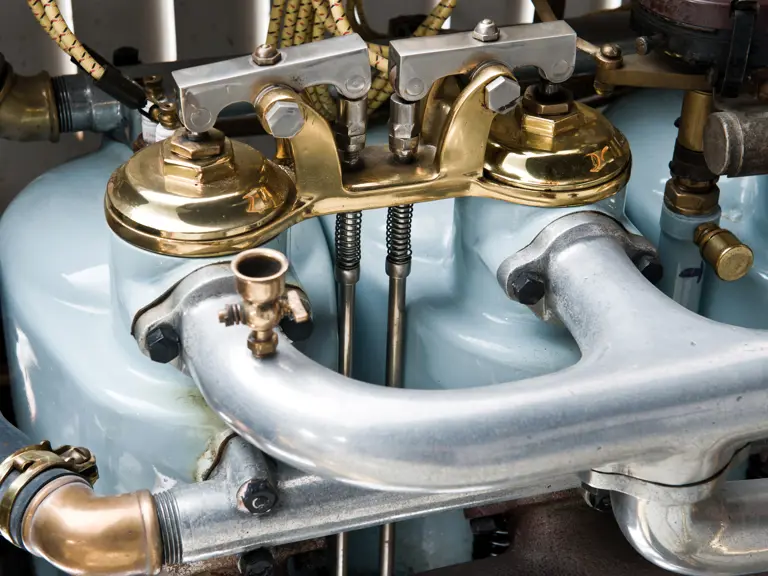
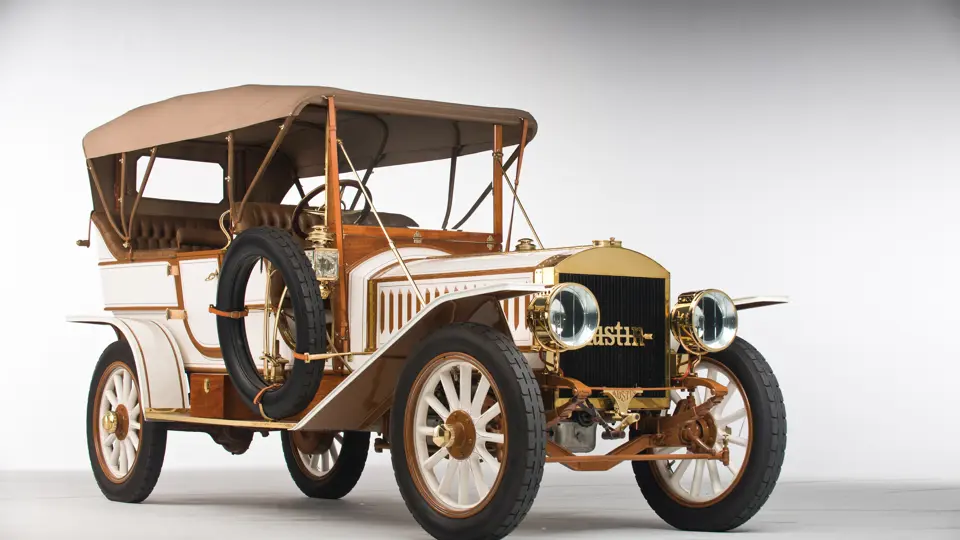
 | Amelia Island, Florida
| Amelia Island, Florida
